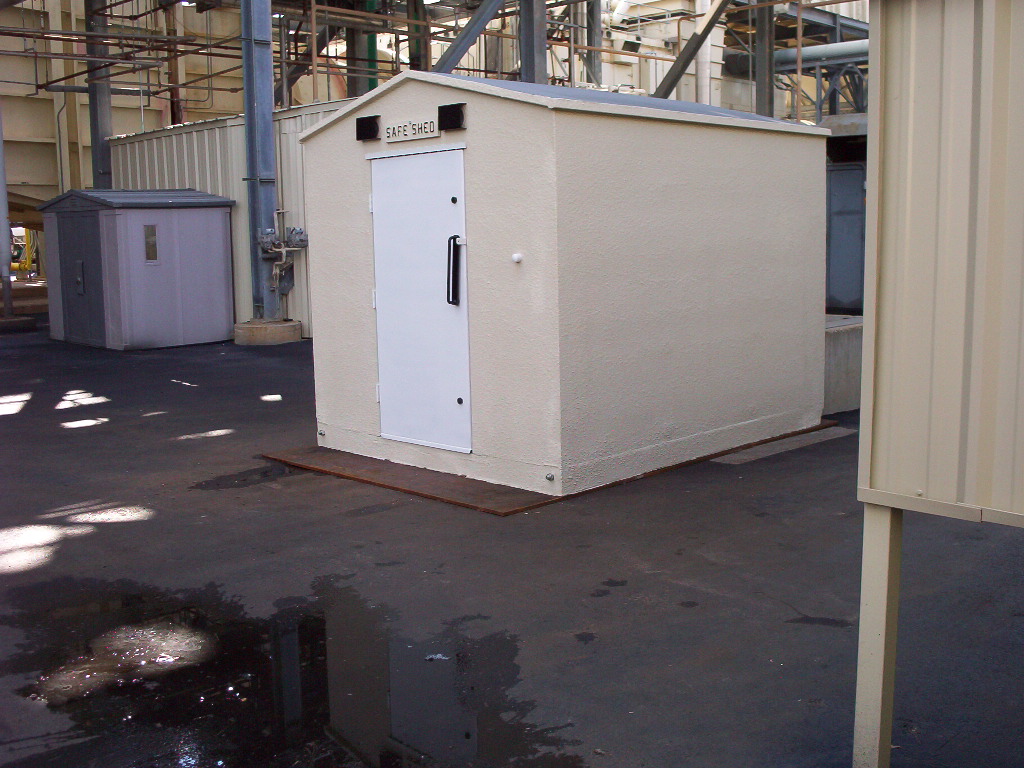Natural disasters are unpredictable, but the steps businesses take to prepare for them can make all the difference in ensuring employee safety. For employers, providing storm shelters at the workplace is an often-overlooked yet highly impactful measure. Storm shelters not only protect employees during severe weather but also foster a sense of security and trust that enhances morale and productivity. When workers know their safety is prioritized, they can focus on their tasks rather than worrying about imminent dangers.
This blog explores the importance of storm shelters in the workplace and examines the broader benefits they bring to employee morale, organizational efficiency, and long-term wellbeing.
The Psychological Impact of Storm Shelters
Storm shelters are more than just physical structures—they represent a commitment to safety from employers. Their presence directly influences the emotional and psychological wellbeing of workers. When employees know they have access to secure areas during tornadoes, hurricanes, or other extreme weather events, it positively impacts their outlook on work and life.
- Reduced Fear and Anxiety: Severe weather can create significant stress for employees, especially in areas prone to hurricanes, tornadoes, or storms. Having a designated safe space ensures they can focus on their work instead of worrying about their safety.
- Increased Trust in Leadership: Employees often view the presence of storm shelters as a sign that their employer genuinely cares for their wellbeing. This builds trust and loyalty.
- Security Beyond the Workplace: Storm shelters help employees feel reassured, enabling them to concentrate on work without concerns about evacuating or staying safe in tough weather conditions.
In contrast, workplaces that fail to address storm safety may inadvertently signal to their workforce that their wellbeing is secondary, leading to disengagement, higher stress levels, and reduced productivity.
Morale and Productivity Go Hand-in-Hand
When employees feel safe, they perform better. The mental assurance of a nearby storm shelter bolsters morale, which naturally impacts overall productivity. Here’s how providing storm shelters can elevate the workplace:
- Enhanced Focus: Employees can dedicate their attention to their tasks rather than worrying every time the weather forecast calls for storms or extreme conditions.
- Improved Retention: Workers are more likely to stay with employers who prioritize their safety. Investing in storm shelters can reduce turnover and increase loyalty.
- Encouraged Collaboration: In critical moments—such as organizing shelter spaces during drills or real emergencies—employees often develop stronger bonds as they work together to ensure collective safety.
Storm shelters also contribute to organizational efficiency by minimizing work interruptions during severe weather events. When employees know they have a reliable haven, businesses are less likely to experience weather-related absenteeism or delays.
What Makes a Storm Shelter Effective?
Providing storm shelters is not just about installing a structure. Employers should focus on creating spaces that are both practical and accessible. Here are a few elements that make storm shelters effective:
- Adequate Space: Shelters should cater to the number of employees on-site, ensuring everyone has room to stay safe.
- Accessibility: Shelters should be easily reachable for all employees, including those with physical disabilities.
- Compliance with Local Codes: Storm shelters must meet standards for extreme weather conditions, such as wind resistance and structural integrity.
- Regular Maintenance: Periodic checks and upgrades ensure the shelters remain functional and reliable during emergencies.
By providing well-designed storm shelters, employers can assure workers that their safety has been thoroughly planned, which strengthens morale and confidence.
Small Investments, Big Returns
Building or improving storm shelters may seem like an upfront cost, but it’s an investment that yields far-reaching benefits by reducing the human and operational toll of severe weather. Consider the wide-ranging advantages:
- Improved safety during emergencies, reducing injury and liability risks.
- Higher employee morale, resulting in greater job satisfaction and better performance.
- Minimized downtime caused by weather disruptions.
For many businesses, the return on investment in storm shelters extends beyond dollars and cents—it includes a more stable and motivated workforce.
The Role of Leadership in Storm Preparedness
Leadership plays a central role in fostering workplace safety, and storm shelters are no exception. Managers and executives must actively demonstrate their commitment to severe weather preparedness if they want employees to take notice. Here’s how leadership can make an impact:
- Set a Standard of Care: They should initiate plans to provide infrastructure like shelters and educate employees about safety procedures tied to these resources.
- Ensure Visibility: Leadership should make it clear where shelters are located, how they are accessed, and when they should be used.
- Monitor and Improve: Regular inspections and consultations with safety professionals keep shelters reliable and up-to-date.
When leaders take action on safety infrastructure, employees often see it as a clear signal of respect and appreciation. This clarity can translate into commitment and loyalty across the workforce.
Creating a Long-Term Safety Strategy
Storm shelters aren’t just about reacting to immediate threats—they should be integrated into a business’s overall safety strategy. Companies that develop comprehensive plans for weather preparedness often experience long-term benefits in both employee morale and operational resilience. Here’s how to build a sustainable safety strategy:
- Conduct Safety Drills: Educate employees regularly about shelter protocols, so they feel prepared during an emergency.
- Employee Feedback: Solicit input from staff about how to improve safety measures, including suggestions regarding shelter access and design.
- Regular Updates: As weather patterns shift and building codes evolve, shelters should be updated to meet new challenges.
Integrating storm shelters into a larger culture of safety reinforces their importance while showing employees that every aspect of their protection is accounted for.
Conclusion
A storm shelter may seem like a simple structure, but its benefits are profound. Providing employees with a safe space during severe weather events demonstrates a company’s commitment to their wellbeing, building trust, loyalty, and morale. This translates into enhanced productivity, reduced turnovers, and smoother workflows—advantages no business can afford to ignore.
In regions affected by hurricanes, tornadoes, or other extreme weather, storm shelters should be considered essential infrastructure. They’re not just protection from the elements; they are a statement of care and respect for the workforce. By making this investment, employers create a safer, happier, and more productive workplace for the long term.



